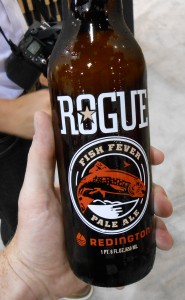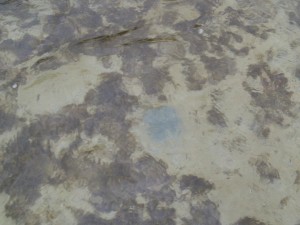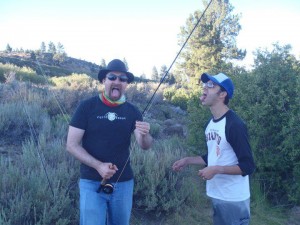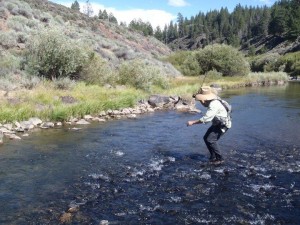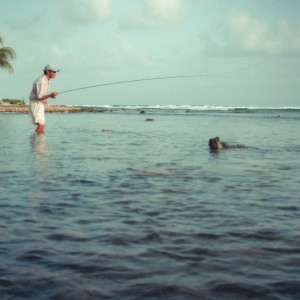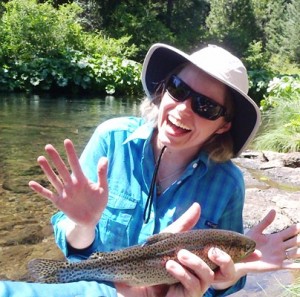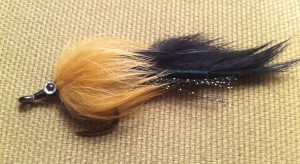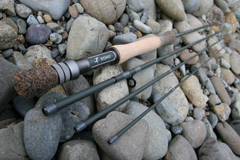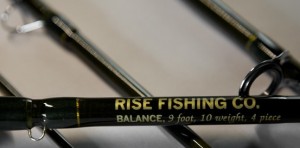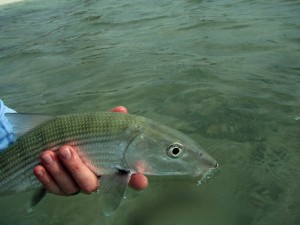OK, yesterday we heard from Davin (Flatswalker) with his post “Trust me, it’s the rod.” Today, I’ll take a little time to expand on my belief that it is reel you should focus on.
I won’t say that rods aren’t important. Heck, it is pretty hard to fly fish without one. However, when it comes to fly fishing in the salt, I’d focus more on the attributes of the reel than I would on the attributes of the rod. Here’s why.
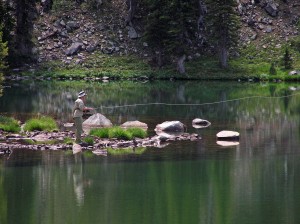
Me, casting, before I even did it very well.
Casting Abilities Trump Rod Abilities
Casting is at the core of fly fishing and learning to cast well is one of those things that pays real dividends. You may be a decent caster, but you can be better and it makes sense to put energy toward that end. I’ve cast a fair number of rods from the Gold Standard to the Tin Standard and I’ve come to the conclusion that the importance of the abilities of the rod decrease as the abilities of the caster increase.
If you have a slower rod, you modify your casting stroke accordingly and you again modify your casting stroke when handed a faster rod. If you are capable of processing the feedback the rod is giving you, you can put that information into your cast and that gets you where you need to go. If you can’t adapt you are going to be limited to the one rod conforming to your static and unchanging casting style.
A good rod helps, but how many more feet is the rod going to get you? How many more inches of accuracy? I’d say the ROI you get from a bonefishing rod starts to drop off dramatically after about $300 (and maybe even $250). If you can pick up an Orvis Helios (a fine rod, by the way) and pound out an 80 foot cast (which I freely admit is almost as useful as pounding out an 80 foot cast while fishing for 5″ trout), I don’t think you suddenly lose your ability to cast when you pick up the Redington Pursuit at 1/6th the price. You certainly would be able to cast more than 1/6th the distance (13 feet). Would you really not be able to cast 70 feet with that rod?
See, I’m betting you would.
That’s really a foundational concept for me. The casting ability of the angler is paramount. Good rods help, but lesser rods do not prevent the same end from being achieved. If the average shot is 50′ in a 12 mph wind, I’m betting rod selection (if we are talking 8 wt.’s from $120 – $800) would only be responsible for fractional differences in overall accuracy.
Let me just be clear… I LIKE GOOD RODS. I really do. If I had $1,000 I could get a good rod and a good reel. If resources were more constrained, however, I might put more emphasis on the reel because my (really very modest) casting abilities can compensate for a more modestly priced rod, in most cases.
Loading at close distances
Some rod issues can really get in the way of your fishing. When wade fishing you tend to see fish much closer than when fishing from a boat. When you are casting to a fish 25 feet away it can be harder to get the uber-fast rods to load with minimal line out. This can cost you fish. However, if you are wading, you can up-line and you’ll find it much easier to load the rod at a shorter distance. Even using a redfish line (which can be .25 to .5 weights heavier than bonefishing lines) instead of a bonefishing line can help. Now, who wants to carry around two rods? Not me, really, but if you know you are going to be mostly on the boat, or mostly on foot, you can line your rod accordingly. Problem mostly solved.
What is prone to break?
When I think about all the things that can go wrong out there on the flats, I tend to think about the many, many ways reels can fail. The cast has been made, the fish has eaten and is streaking off across the flat and your reel is hesitant, halting, protesting with odd sounds… it isn’t good. Your drag if failing. Tenkara bonefishing is not very practical, so you are going to need your reel to be functioning, and functioning well. A bonefish can swim upwards of 25 mph, which requires some machined goodness on the other end. That reel you caught that big trout on just isn’t going to do the job, most likely. If it does work once, it might not work twice and almost certainly won’t at the end of your trip to Andros.
The salt and the sand and the shear power of the bonefish can combine in many gear-destroying ways. Having a reel capable of putting up with the harsh conditions is critical. I’ve been out on the flats with reels not up to the job and it is a horrible position to be in. When the reel fails, that is it. You are done fishing.
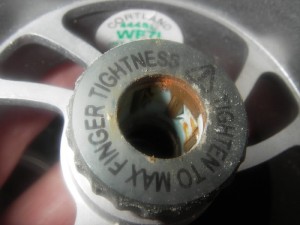
Well, that isn’t going to work well.
How often does the rod fail? Beyond stepping on it or chopping off the top 1/4 in the ceiling fan back at the lodge, it is very unlikely the rod itself will actually stop working. Beyond something falling off, snapping in two or coming apart I don’t even know really how a rod could stop working.
Reels, on the other hand DO stop working. I have had four reels bite the dust on me on trips, and one bite the dust in testing (which may be why it has become difficult to actually get more reels to do testing on). The most memorable was an Cabela’s large arbor that I got as a gift. I was down in Mexico and managed to hook into a 12 pound Jack. That reel was so toast. Ever turn of the handle there was a scraping and the drag became uneven and clunky. I landed the fish, but that reel never fished again. It was not up to the task. It would have landed 20″ trout until the end of time, but you put a 12 pound Jack on the other end and the pretender gear gets sorted out rather quickly and objectively.
Sealed drag or unsealed drag?
Actually, I don’t care so much. For me, a sealed drag is better because I’m crap with gear maintenance. Unsealed drags, like those iconic cork drag reels, have been put to hard and continuous service for a long time, so they obviously work. I tend to need my reels to be less needy of my attention. That said, if I had a Tibor, I’d likely sleep with it on the pillow right next to my head (as I would with a Nautilus or that F1 from Ross).
To sum it all up
I look at the rod vs. reel debate through an ROI lens. I know that I can pay to avoid reel failure, but I’m not convinced I can buy another 10 feet to my cast. I, like Davin, love gear. I’d have it all if I could. All of it. All the good stuff anyway. Of course, to have that much money I’d likely have to go into investment banking and destroy countless lives. Would it be worth it? Probably, but I’m no good with numbers, alas. So, in my current resource-constrained state, I need to put the money where it is going to do the most good. I’m pretty sure I’d rather avoid reel failure over having a lighter/stronger rod. I’d like them both, of course, but when push comes to shove, I’d grab the cheap rod and the badass reel.
